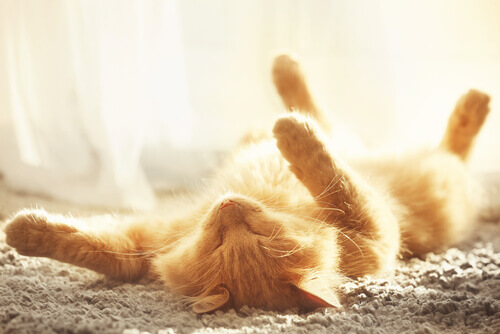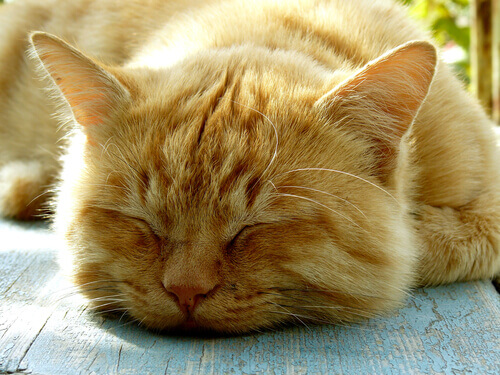Tips to Prevent Heatstroke in Cats

Pets have a hard time during high temperatures and furry ones, like cats, are particularly susceptible to heatstroke. You can protect your pet during the summer and prevent it with these tips.
Symptoms to take into account when preventing heatstroke in cats
Cats are animals that aren’t very good at tolerating high temperatures. This is because they only sweat through their pads and can only regulate their body temperature to a certain extent.
Any failure to take this fact into account could lead to heatstroke and possible long-term life-threatening sequelae.
Preventing heatstroke in cats
Once this animal’s body temperature rises above normal, they’ll begin to show certain alarming symptoms such as:
- Nervous and agitated behavior. Once the animal begins to overheat, their first instinct will be to look for a cool spot where they can lower their body temperature.
- Then, their body will begin to activate a series of mechanisms. Among them, drooling, sweating excessively on their paws, and licking themselves repeatedly.
- Another symptom they might experience is an increase in rectal temperature.
- Vomiting.
- Lethargic behavior added to staggering or stumbling.
- And , finally, a glazed look.

The immediate course of action
Once you realize your cat is experiencing heatstroke, you must do your best to prevent long-term sequelae.
- If you find your cat unconscious in an excessively hot environment, douse them with cool, not cold, water and try to keep it away from their airways.
- Also, if the animal is conscious but begins to display the symptoms described above, then take them immediately to a shady environment at an ambient temperature of about 60 degrees Fahrenheit, where you’ll give them plenty of drinking water and douse them with cool water.
- If the cat is in a place where they can’t get away from the heat and there’s also poor ventilation, then try to move them to a shady room; make sure there’s a drinking water source nearby.
- In the case of a particularly severe heatstroke, a veterinarian can place an intravenous feed that’ll provide your pet with the fluids they need. This won’t just lower their temperature but will also minimize the risk of organ damage.
The vet will keep the animal under observation in order to prevent organ/brain damage until the animal’s temperature returns to normal.